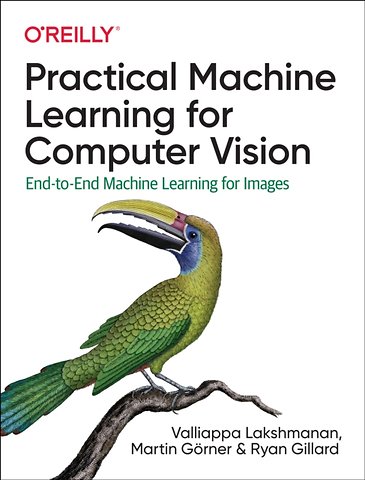

Valliappa (Lak) Lakshmanan is currently a Technical Lead for Data and Machine Learning Professional Services for Google Cloud.
Meer over de auteursPractical Machine Learning for Computer Vision
End-to-End Machine Learning for Images
Paperback Engels 2021 1e druk 9781098102364Samenvatting
By using machine learning models to extract information from images, organizations today are making breakthroughs in healthcare, manufacturing, retail, and other industries. This practical book shows ML engineers and data scientists how to solve a variety of image problems including classification, object detection, autoencoders, image generation, counting, and captioning with proven ML techniques.
Google engineers Valliappa Lakshmanan, Martin Görner, and Ryan Gillard show you how to develop accurate and explainable computer vision ML models and put them into large-scale production using robust ML architecture in a flexible and maintainable way. You'll learn how to design, train, evaluate, and predict with models written in TensorFlow/Keras. This book also covers best practices to improve the operationalization of the models using end-to-end ML pipelines.
You'll learn how to:
- Design ML architecture for computer vision tasks
- Select a model (such as ResNet, SqueezeNet, or EfficientNet) appropriate to your task
- Create an end-to-end ML pipeline to train, evaluate, deploy, and explain your model
- Preprocess images for data augmentation and to support learnability
- Incorporate explainability and responsible AI best practices
- Deploy image models as web services or on edge devices
- Monitor and manage ML models
Specificaties
Lezersrecensies
Inhoudsopgave
Machine Learning
Deep Learning Use Cases
Organization of Book
Summary
2. ML Models for Vision
Machine Perception
Working with the dataset
Linear Model Using Keras
Keras Model
Training the Model
Neural Network Using Keras
Neural Networks
Deep neural networks
Summary
3. Image Vision
Pretrained Embeddings
Pretrained Model
Transfer Learning
Fine-tuning
Convolutional networks
Convolutional Filters
Stacking convolutional layers
Pooling layers
AlexNet
The Quest for Depth
Filter factorization
1x1 convolutions
VGG19
Global average pooling
Modular Architectures
Inception
SqueezeNet
ResNet and Skip Connections
DenseNet
Depth-separable convolutions
Xception
Neural Architecture Search Designs
NasNet
Depth-wise convolutions
Inverted Residual Bottlenecks
MobileNetV2
EfficientNet: Putting It All Together
Choosing a Model
Performance Comparison
Ensembling
Recommended Strategy
Summary
4. Creating Vision Datasets
Collecting Images
Photographs
Imaging
Proof of concept
Data Types
Channels
Geospatial data
Audio and Video
Manual Labeling
Folder structure
Metadata table
Object detection
Labeling at scale
Labeling user interface
Multiple tasks
Voting and crowdsourcing
Labeling services
Automated Labeling
Labels from related data
Noisy student
Self-supervised learning
Bias
Sources of bias
Selection bias
Measurement bias
Confirmation bias
Detecting bias
Creating a Dataset
Splitting data
TensorFlow Records
Reading TensorFlow Records
Summary
Anderen die dit boek kochten, kochten ook
Rubrieken
- advisering
- algemeen management
- coaching en trainen
- communicatie en media
- economie
- financieel management
- inkoop en logistiek
- internet en social media
- it-management / ict
- juridisch
- leiderschap
- marketing
- mens en maatschappij
- non-profit
- ondernemen
- organisatiekunde
- personal finance
- personeelsmanagement
- persoonlijke effectiviteit
- projectmanagement
- psychologie
- reclame en verkoop
- strategisch management
- verandermanagement
- werk en loopbaan





